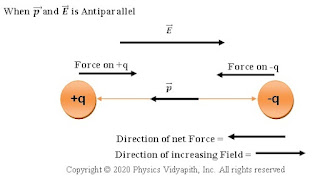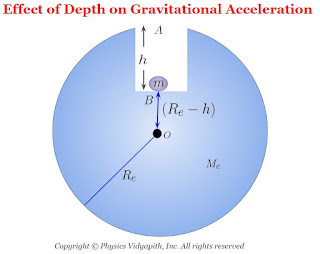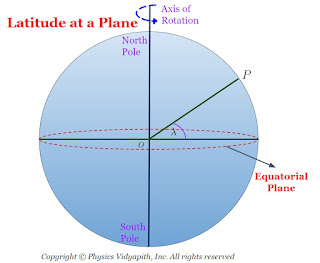Force between multiple charges (Superposition principle of electrostatic forces)
If a system contains a number of interacting charges, then the net force on anyone charge equals the vector sum of all the forces exerted on it by all the other charges. This is the principle of Superposition for electric force.
- Coulomb's force between the two charges is directly proportional to the product of the magnitude of the charge.
$ F\propto q_{1}q_{2}$
- Coulomb's force between the two charges is inversely proportional to the square of the distance between the two charges.
$F\propto \frac{1}{r^{2}}$
- The electrostatic force acts between the line joining the charges. In two charges, one charge is assumed to be at rest for the calculation of the force on the second charge. So It is also known as a central force.
- The magnitude of the electrostatic force is equal and the direction of force is opposite. So the electrostatic force is also known as the action and reaction pair.
- The electrostatic force between two charge does not affect by the presence and absence of any other charges but the net force increase on the source charge.
Definition and derivation of the phase velocity and group velocity of wave
A wave is defined as a disturbance in a medium from an equilibrium condition that propagates from one region of the medium to other regions.
The velocity with which plane of constant the phase of a wave propagates through the medium at a certain frequency is called the phase velocity or wave velocity.
A wave packet is an envelope or packet which contains the number of plane waves having different wavelengths or wavenumbers. These numbers of waves superimpose on each other and form constructive and destructive interference over a small region of space and a resultant wave obtain. The spread of amplitude of the resultant wave with distance determines the size of the wave packet. A wave packet is also called a wave group.
 |
The velocity of propagation of wave packet through space is known as group velocity.
- The sine factors represent a carrier wave that travels with the phase velocity.
- The amplitude of the resultant wave is
Product of phase velocity and group velocity is equal to square of speed of light
The Product of phase velocity and group velocity is equal to the square of the speed of light i.e. $\left( V_{p}.V_{g}=c^{2} \right)$
Energy distribution spectrum of black body radiation
- The energy distribution in the radiation spectrum of the black body is not uniform. As the temperature of the body rises the intensity of radiation for each wavelength increases.
- At a given temperature, the intensity of radiation increases with increases in wavelength and becomes maximum at a particular wavelength with further in increases wavelength the intensity of radiation decreases.
- The points of maximum energy shift towards the shorter wavelength as the temperature increases i.e. $\lambda _{m} \times T=constant$. It is also known as Wein’s displacement law of energy distribution.
- For a given temperature the total energy of radiation is represented by the area between the curve and the horizontal axis and the area increases with increases of temperature, being directly proportional to the fourth power of absolute temperatures.
The total amount of heat radiated by a perfectly black body per unit area per unit time is directly proportional to the fourth power of its absolute temperature $(T)$.
$E = \sigma T^{4}$ Where $\sigma$ = Stefan constant having value $\left ({5}\cdot{67}\times{10}^{-8}Wm^{-2}K^{4}\right )$This is called Stefan-Boltzmann's law of energy distribution.
 |
| Energy distribution in the spectrum of black body radiation |
Derivation of torque on an electric dipole in an uniform and a non-uniform electric field

|
| Torque on electric dipole |

|
| Direction of torque |

|
| When p and E are Parallel |
 |
| When p and E are antiparallel |
Electric Dipole and Derivation of Electric field intensity at different points of an electric dipole
The product of magnitude of one point charged particle and the distance between the charges is called the 'electric dipole moment'. It is vector quantity and the direction of electric dipole moment is along the axis of the dipole pointing from negative charge to positive charge.
 |
| Electric Dipole |
- Electric field intensity at any point on the axis of an electric dipole
- Electric field intensity at any point on the equatorial line of an electric dipole
- Electric field intensity at any point on an electric dipole
 |
| Electric field intensity at any point on the axis of an electric dipole |
 |
| Electric field intensity at a point of the equatorial line of an electric dipole |
 |
| Electric field intensity at any point of an electric dipole |
Definition and Expression of escape velocity of an object on the planet
The minimum velocity, by which an object is thrown vertically in an upward direction and that object goes out from the gravitation field of the planet and does not come back, is called the escape velocity.
The radius of the planet = $R$
The mass of the object = $m$ The gravitational force on an object at position $P$ which is a distance $x$ from the surface of the planet
Numerical Problems and Solutions of Centripetal Force and Centripetal Acceleration
Numerical Problems and Solutions
Q.1 An object of mass $0.20 \: Kg$ is being revolved in a circular path of diameter $2.0 \: m$ on a frictionless horizontal plane by means of a string. It performs $10$ revolutions in $3.14 \: s$. Find the centripetal force acting on an object.
Solution:Given that:
Mass of body $(m)=0.20 \: Kg$
Diameter of Circular path $(d)=2.0: m$
Number of revolutions $(n)=10$
Time taken to complete $(10)$ revolution$(t)=3.14 s$
The centripetal force acting on a body $(F)=?$
Now the centripetal force:
$F=m r \omega^2$
$F=m r \left( \frac{2 \pi n}{t} \right)^2$
Now Substitute the given values in the centripetal force formula:
$F=0.20 \times 1 \left( \frac{2 \times 3.14 \times 10}{3.14} \right)^2$
$F=0.8 N$
Q.2 A car of mass $1200 Kg$ is moving with a speed of $10.5 ms^{-1}$ on a circular path of radius $20 m$ on a level road. What will be the frictional force between the car and the road so that the car does not slip?
Solution:Given that:
Mass of car $(m) = 1200 \: Kg$
Speed of car $(v) = 10.5: ms^{-1}$
The radius of circular path $(r)= 20 m$
The frictional force $(F)=?$
The frictional force $(F)$ should be equal to the required centripetal force i.e
$F=\frac{mv^{2}}{r}$
Now Substitute the given values in the centripetal force formula:
$F=\frac{1200 \times (10.5)^{2}}{20}$
$F=6.615 \times 10^{3} N$
Q.3 A string can bear a maximum tension of $50 N$ without breaking. A body of mass $1 kg$ is tied to one end of $2 m$ long piece of the string and rotated in a horizontal plane. Find the maximum linear velocity with which the string would not break.
Solution:Given that:
Maximum tension on the string without breaking $(F)=50 N$
mass of the a body $(m)=1 Kg$
length of the string $(l)=2 m$
The maximum velocity with which the string would not break $(v)=?$
We know that the centripetal force:
$F=\frac{mv^{2}}{r}$
$v=\sqrt{\frac{F \: r}{m}}$
Now Substitute the given values in the centripetal force formula:
$v=\sqrt{\frac{50 \times 2 2}{1}}$
$v=10 ms^{-1}$
Q.4 The moon revolves around the earth in $2.36 \times 10^{6} s$ in a circular orbit of radius $3.85 \times 10^{5} Km$. Calculate the centripetal acceleration produced in the motion of the moon.
Solution:Given that:
The radius of circular orbit of the moon $(r)=3.85 \times 10^{5} Km = 3.85 \times 10^{8} m$
Time taken to complete one revolution $(T)=2.36 \times 10^{6} s$
Centripetal acceleration produced in the motion of the moon $=?$
The centripetal acceleration:
$a= \omega^{2} r $
$a= \left( \frac{2 pi}{T} \right) r \qquad \left( \because \omega= \frac{2 pi}{T} \right) $
Now Substitute the given values in the centripetal acceleration formula:
$a= \left( \frac{2 \times 3.14}{2.36 \times 10^{6}} \right) \times 3.85 \times 10^{8} $
$a=2.73 \times 10^{-3} ms^{-2} N$
Q.5 Calculate the centripetal acceleration at a point on the equator of the earth. The radius of the earth is $6.4 \times 10^{6} m$ and it completes one rotation per day about its axis.
Solution:Given that:
Radius of earth $(r)=6.4 \times 10 ^{6} m$
Time taken to complete one rotation per day about its axis$(T)=24 \times 60 \times 60 s$
centripetal acceleration at a point on equator $=?$
The centripetal acceleration:
$a= \omega^{2} r $
$a= \left( \frac{2 pi}{T} \right) r \qquad \left( \because \omega= \frac{2 pi}{T} \right) $
Now Substitute the given values in the centripetal acceleration formula:
$a= \left( \frac{2 \times 3.14}{24 \times 60 \times 60} \right) \times 6.4 \times 10^{6} $
$a=3.37 \times 10^{-2} ms^{-2} N$
Variation of Acceleration Due to Gravity
2.) Effect of depth below the earth's surface on Acceleration due to Gravity
3.) Effect of the shape of the earth 4.) Effect of rotation about its own axis
The radius of the earth = $R_{e}$
A satellite is moving around the earth from the surface of the earth at height= $h$
The mass of the earth = $M_{e}$
The mass of the earth at depth $h$ from the surface of the earth = $M'_{e}$
The radius of the earth = $R_{e}$
ii.) Increases with the increase in the latitude of the place.
$\lambda = 0^{\circ}$
$g'=p_{e}$
Then from above equation $(3.2)$,
$\lambda = 90^{\circ}$
$g'=g_{p}$
Then from above equation $(3.2)$,
Popular Posts
-
Angle of Acceptance → "If incident angle of light on the core for which the incident angle on the core-cladding interface equals t...
-
Let $S$ be a point monochromatic source of light of wavelength $\lambda$ placed at the focus of collimating lens $L_{1}$. The light beam is ...
-
Maxwell's Equations: Maxwell's equation of the electromagnetic wave is a collection of four equations i.e. Gauss's law of elec...
-
Derivation of interference of light due to a wedge-shaped thin film: Interference of light due to wedge-shaped thin film The wedge...
-
Let a plane wavefront be incident normally on slit $S_{1}$ and $S_{2}$ of equal $e$ and separated by an opaque distance $d$.The diffracted l...











